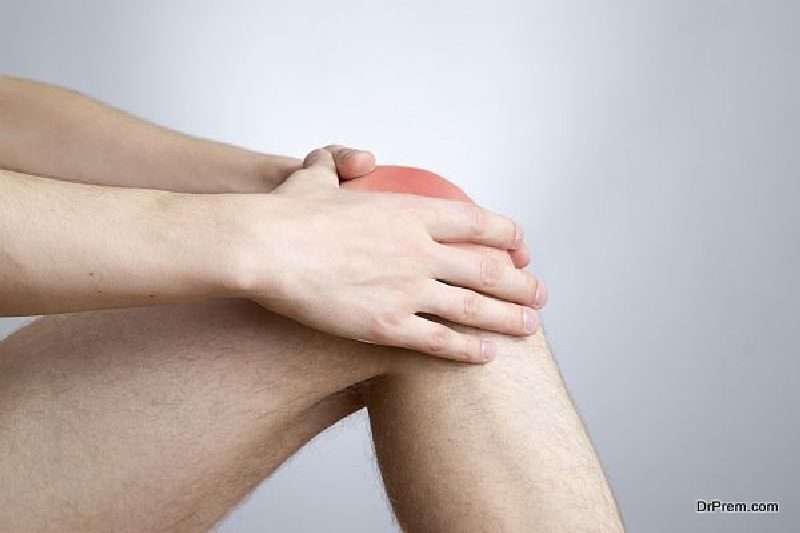Inflammation is a common and natural occurrence in the human body. It’s your body’s way of protecting certain joints and areas from further injury and foreign substances.
So what exactly is inflammation? Inflammation is a warning sign that something is wrong in your body. Your white blood cells release chemicals into the blood near the affected tissues. These chemicals increase the blood flow to the point of injury or infection, causing inflammation. You might also notice the area becomes warm to the touch or slightly red in color. Other symptoms associated with inflammation are swelling, pain, fatigue, itchy skin, and even gastrointestinal issues like IBS and Ulcerative Colitis.
But once you experience inflammation, how can you treat it? Of course there are over the counter medications that treat both pain and inflammation simultaneously. But what if you don’t want to take medication? What other options do you have? And what can help prevent unwanted inflammation? Read on to find out.
Foods

Did you know that there is actually an extensive list of foods that can help reduce inflammation? Here are just a few:
- Leafy Greens: High in antioxidants, vitamin A, C, and K
- Celery: Has antioxidant and anti-inflammatory properties. Helps lower inflammation and fight bacterial infections.
- Broccoli: Contains flavonoids, carotenoids, and vitamins to help treat chronic inflammation and even lower the risk for cancer.
- Blueberries: Contains quercetin, which is a flavonoid that combats both inflammation and cancer. Added benefits are motor function and improved memory.
- Pineapple: Contains bromelain (a digestive enzyme) and is also said to help regulate unwanted and unnecessary inflammation.
- Salmon: Contains fatty acids and omega-3s, which fight inflammation.
- Green Tea: Contains antioxidants and stress relieving components.
Other foods that contain anti-inflammatory properties and important antioxidants are walnuts, chia seeds, turmeric, and ginger. Incorporating these foods into your diet not only help to address current inflammation but can help prevent future occurrences.
CBD
The use of CBD for medical reasons is gaining in popularity. CBD is a cannabinoid found in cannabis and has proven to have some pretty impressive medical benefits. These include helping to reduce stress, onset diabetes, nausea and stomach pain, and yes, inflammation.
Unlike THC (tetrahydrocannabinol), CBD is non psychoactive and more widely used and accepted. The most common ways to consume CBD are through capsules or oil.
Heat or Cold

Because inflammation sometimes causes swelling in certain areas of the body, hot and cold compresses may offer some relief. Cold helps to reduce swelling and inflammation and can also numb pain. Heat is more commonly used to treat sore muscles, pain, and stiffness.
Cold therapy works by reducing blood flow to the affected areas of the body. This reduces inflammation, pain, and swelling. Nerve activity is also temporarily reduced, which also eases pain. You can use an ice pack, coolant sprays, ice massages or an ice bath. Don’t use cold therapy if you suffer from poor circulation or have stiff muscles or joints.
Elevation
Elevation can help by reducing swelling, which is often caused by inflammation. Elevation is part of the RICE method – rest, ice, compression and elevation. As mentioned before, when you injure a part of your body, blood rushes to the area to help with the healing process. This rush of blood flow is what causes swelling and inflammation. When you elevate the extremity above your heart, it helps to reduce the flow of blood, which in turn reduces swelling and ease inflammation.
Exercise

This may not make sense, but equal parts of rest and exercise can actually help with inflammation. Rest is important so that you don’t further injure yourself. But too much time spent inactive may actually lead to stiffness or immobility. Another leading factor in inflammation is excessive weight. If you’re overweight, it places additional, unwanted pressure on your joints and tendons, which is where unwanted inflammation stems from. So remain active by taking walks, performing household chores, and or even doing yard work. All of these are low impact exercises that can help reduce inflammation and prevent unwanted inflammation in the future.
Reduce Stress
Another great way to keep unwanted inflammation at bay is to reduce stress. People that have strong, emotional reactions to stress actually suffer from inflammation more frequently than those who are less stressed. Stress also increases your heart rate and blood pressure, which makes your blood vessels work harder, pounding on different parts of the body. This constant pounding can cause inflammation. That means participating in stress-relief activities is a great way to prevent inflammation.
Yoga is another way of reducing stress and also lowers the body’s levels of two major markers of inflammation – C-reactive protein and interleukin-6.
Get a Massage

Massages don’t just reduce stress, which we know can help prevent inflammation, but the pressure also increases the amount of white-blood cells in the body. White blood cells are proven to help fight disease and infection. So getting a massage offers the two-fold benefit of relaxation and preventing the onset of inflammation.
Catch Some Z’s
Lack of sleep doesn’t necessarily cause inflammation, but the way you act when you’re tired can actually be harmful to your health. Most people get more easily agitated, stressed, and frustrated when they’re tired. And it’s already been noted that increased stress can lead to increased inflammation. So getting enough sleep means remaining more even-tempered, which prevents those inflammation aggravators from rearing their ugly heads.
Know the Signs

Understanding when your body is experiencing inflammation can help you to address it accordingly. Giving yourself ample time to rest, elevate the area, and apply ice to help reduce the effects of inflammation including swelling, redness, and pain. You can also help prevent unwanted inflammation by consuming certain foods, reducing stress, and getting enough sleep.
Article Submitted By Community Writer




